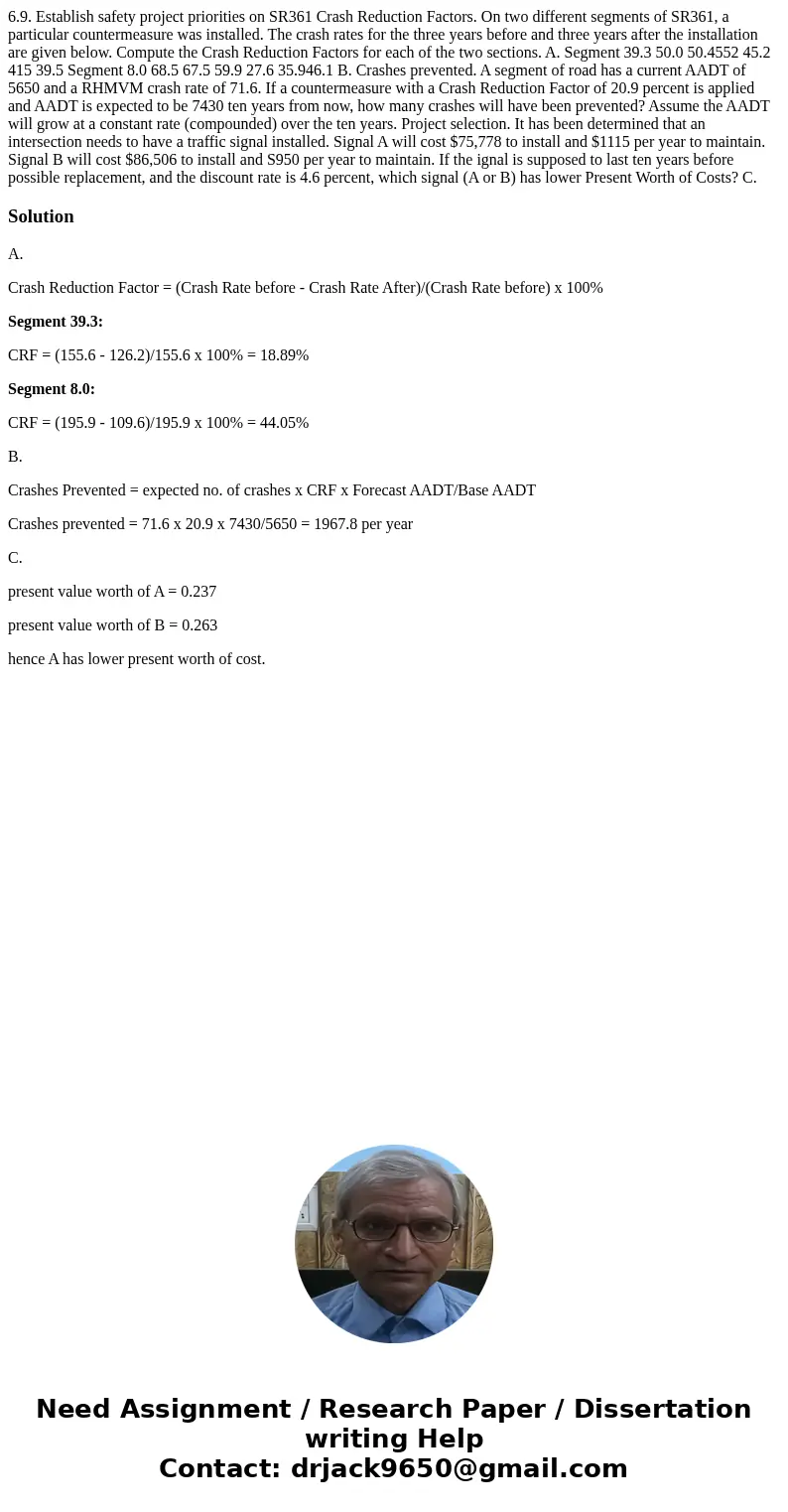69 Establish safety project priorities on SR361 Crash Reduct
6.9. Establish safety project priorities on SR361 Crash Reduction Factors. On two different segments of SR361, a particular countermeasure was installed. The crash rates for the three years before and three years after the installation are given below. Compute the Crash Reduction Factors for each of the two sections. A. Segment 39.3 50.0 50.4552 45.2 415 39.5 Segment 8.0 68.5 67.5 59.9 27.6 35.946.1 B. Crashes prevented. A segment of road has a current AADT of 5650 and a RHMVM crash rate of 71.6. If a countermeasure with a Crash Reduction Factor of 20.9 percent is applied and AADT is expected to be 7430 ten years from now, how many crashes will have been prevented? Assume the AADT will grow at a constant rate (compounded) over the ten years. Project selection. It has been determined that an intersection needs to have a traffic signal installed. Signal A will cost $75,778 to install and $1115 per year to maintain. Signal B will cost $86,506 to install and S950 per year to maintain. If the ignal is supposed to last ten years before possible replacement, and the discount rate is 4.6 percent, which signal (A or B) has lower Present Worth of Costs? C. 
Solution
A.
Crash Reduction Factor = (Crash Rate before - Crash Rate After)/(Crash Rate before) x 100%
Segment 39.3:
CRF = (155.6 - 126.2)/155.6 x 100% = 18.89%
Segment 8.0:
CRF = (195.9 - 109.6)/195.9 x 100% = 44.05%
B.
Crashes Prevented = expected no. of crashes x CRF x Forecast AADT/Base AADT
Crashes prevented = 71.6 x 20.9 x 7430/5650 = 1967.8 per year
C.
present value worth of A = 0.237
present value worth of B = 0.263
hence A has lower present worth of cost.

 Homework Sourse
Homework Sourse